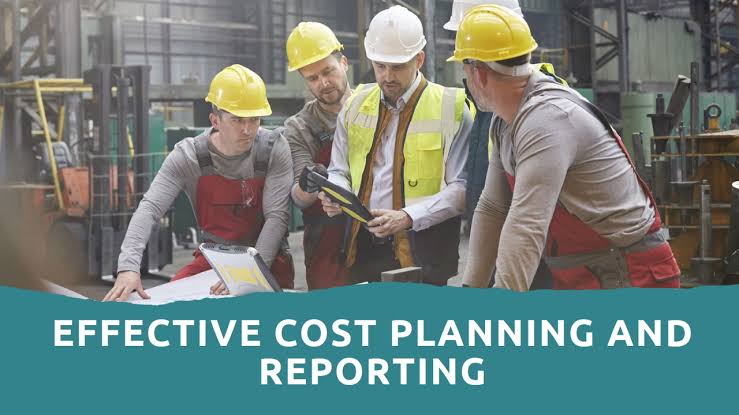Managing the building budget efficiently is important for the success of any building project. Whether you’re building a new home, renovating an existing one, or undertaking a large commercialized project, correct budgeting could make the residue between an intact appendage and a fiscal headache. One of the key elements in efficacious budget direction is estimating. In this blog, we explored why estimating is so important, how it impacts building budgets as well as tips for making the ferment as correct and efficacious as possible including how construction estimators play a vital role in this process.
What is Estimating in Construction?
Estimating in a building involves predicting the costs associated with learning before it starts. This includes everything from materials and labor to bang and unexpected expenses. Justice provides a detailed crack-up of these costs and helps managers and clients learn the fiscal scope of the project. Assessing isn’t just about doing the math; it’s tied in with get-together data, dissecting it, and making reasonable deductions about increasing costs. Exact evaluations are crucial for setting unmistakable financial plans and staying away from cost invades.
Why is Estimating Important?
Setting a Realistic Budget
A well-prepared justice helps in setting a tangible budget. Without correct estimates, you risk underestimating costs, which could lead to fiscal accent or learning delays. By providing a detailed crack-up of expenses, estimating ensures that you allocate easy funds for every face of the project.
Avoiding Cost Overruns
Cost overruns are a normal issue in building projects, often arising from unexpected expenses. Correct justice helps identify effectiveness risks and allows for the comprehension of continence funds. This active admittance minimizes the chances of running over budget.
Effective Resource Allocation
Estimating helps in planning the parceling of resources. Knowing the cost of materials and labor in promotion allows you to add purchases and deal standards more effectively. It additionally guarantees that you have the perfect amount of assets at the ideal time, lessening deferrals and shortcomings.
Working on Monetary Administration
With a detailed estimate, you could track expenses more efficiently and liken them against the budget. This helps in identifying discrepancies early and making demand adjustments. Effective fiscal direction ensures that the learning stays inside the budget and is completed successfully.
Enhancing Communication with Stakeholders
Estimates serve as a communication tool between learning managers, clients as well as and contractors. A clear and detailed justice helps stakeholders learn the fiscal aspects of the project, which is important for making informed decisions and avoiding misunderstandings.
How to Create an Accurate Estimate
Gather Detailed Information
Start by gathering detailed data about the project. This includes study plans, engineering specifications, and any other applicative documents. Understanding the scope of the learning is the basis for creating a correct estimate.
Break Down Costs
Break down the costs into categories such as materials, labor, equipment, and overhead. Each family should be detailed to allow a clear cinema of where the money had been spent. For example, in the materials category, acknowledge the cost of each type of corporeal required. Additionally, incorporating electrical estimating services can help ensure that the costs associated with electrical components are accurately accounted for, further enhancing the clarity and precision of your budget.
Consider Labor Costs
Labor costs are a meaningful part of the budget. Estimate the reckon of labor hours needed for each task and multiply this by the hourly wage of workers. Don’t acknowledge costs for clear-cut types of labor, such as skilled and unskilled workers.
Account for Overhead and Contingencies
Overhead costs acknowledge expenses that are not two dimensional related to the learning but are demand for its completion, such as body costs and insurance. Contingency funds are set aside for unexpected expenses. Typically as well as a part of the total learning cost was allocated for contingencies.
Use Estimating Software
Estimating parcels could streamline the ferment and improve accuracy. These tools help in organizing data, performing calculations, and generating detailed reports. They also provided templates and past data that can be used for comparison.
Review and Revise
After preparing the first estimate, study it thoroughly. Check for any errors or omissions and retool as needed. It’s also good to get an unconventional view from another computer or declarer to check if the justice is as correct as possible.
Common Challenges in Estimating
- Unforeseen Changes: Changes in learning scope or pattern could impact the truth of an estimate. To palliate this, acknowledge a conciliatory admittance in your budgeting ferment and regularly updated estimates to beam any changes.
- Inaccurate Data: Using outdated or broad data could lead to wrong estimates. Ensure that you use the most advanced and applicative data available. This includes modern day corporeal prices, labor rates as well as ‘ and foodstuff conditions.
- Complexity of Projects: Complex projects with many variables can be challenging to do justice accurately. Break down the learning into smaller, doable parts and estimate each element separately. This admittance could help in managing complexness and improving accuracy.
- Lack of Historical Data: Without past data from projects, it can be dirty to make correct estimates. Utilize manufacturing benchmarks and refer to experienced professionals to gain insights and improve your estimates.
Tips for Better Estimating
Involve the Team
Involve key team members, such as architects, engineers as well as contractors, in the estimating process. Their expertness and input could allow quantitative insights and improve the truth of the estimate.
Update Estimates Regularly
Regularly updated estimates to beam changes in corporeal costs, labor rates, and learn scope. This helps in maintaining truth through the learning lifecycle.
Use Historical Data
Referenced past data from past projects to guide your estimates. This data could allow benchmarks and help in predicting rising costs more accurately.
Communicated Clearly
Ensure that your estimates are communicated clearly to all stakeholders. Provide detailed breakdowns and explanations to avoid misunderstandings and check everyone is on the same page.
Track Actual Costs
Track real costs passim the learn and liken them with the estimated costs. This helps in identifying any discrepancies and making demand adjustments to stay on budget. Utilizing lumber takeoff services can provide accurate measurements and cost assessments for materials, ensuring that any variances are promptly addressed and budget management remains on track.
Conclusion
Estimating is a central face of managing building budgets. Accurate estimates are base for setting tangible budgets, avoiding cost overruns, and ensuring efficacious resourcefulness allocation. By following best practices in estimating and addressing normal challenges, you could correct the truth of your estimates and heighten boilersuit budget management. Remember, a well-prepared justice is not just a fiscal document; it’s a tool for high learning slaying and fiscal control.










